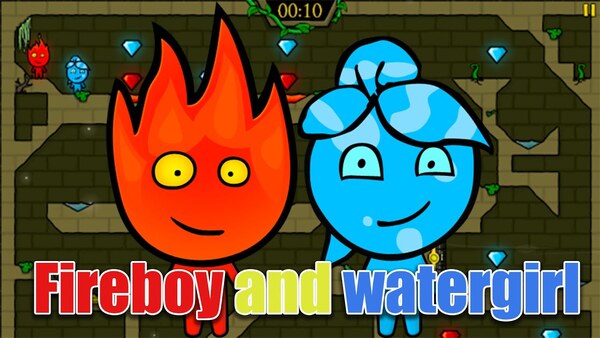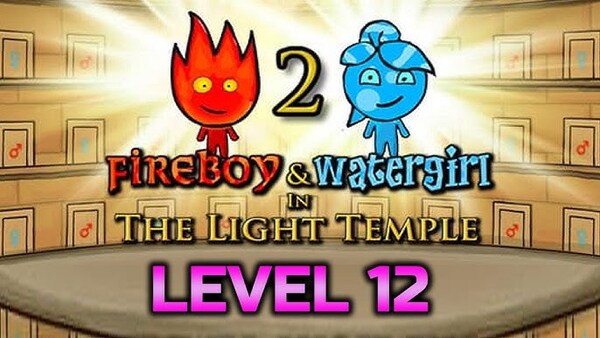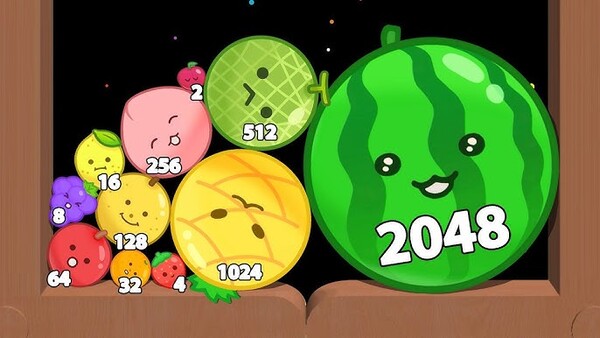Popular Now
Introduction
Fireboy and Watergirl 2: The Light Temple expands upon the beloved co-op platformer series. Launched in 2010 by Oslo Albet and Jan Villanueva, this sequel takes players into a luminous temple full of puzzles that require both characters’ unique abilities. Whether you're a solo gamer toggling between characters or co-op gaming with a friend, you'll appreciate the balanced design, clever mechanics, and increasing complexity. This expert article delves deep into its timeline, gameplay nuances, puzzle design, and strengths and weaknesses—culminating in a comprehensive pros/cons section, expert rating, and conclusion.
1. Origins and Conceptual Foundations (Circa 2010)
In early development, the creators decided to build upon the original “Fireboy and Watergirl” formula. While the first installment focused on twin caves, The Light Temple introduces elements like light-switching crystals, timed platforms, and swap gates. The emphasis on light, shadow, and mirror mechanics lends a fresh tech-puzzle veneer to the formula.
By mid-2010, the game launched on various Flash platforms and quickly became a browser staple. Its dual-character gameplay stood out, encouraging either local co-op or solo play by controlling both Fireboy and Watergirl via keyboard.
Designers’ Vision
Albet and Villanueva aimed to maintain accessibility while evolving complexity. They retained the two-character dynamic but added light-based puzzles that required spatial awareness and timing.
Early Reception
Upon release, players praised the charming art style, intuitive controls, and well-paced puzzle difficulty. Many reviews highlighted how the light mechanics added depth without overwhelming players.
2. Story Progression and Temple Theme
The narrative here is minimalistic but effective: Fireboy and Watergirl, following their journey through caves, now explore a Light Temple to collect magical crystals and progress. This level-based progression mimics ancient temple explorations, each room representing a self-contained challenge.
The temple backdrop reinforces thematic unity: smoky torches, glowing crystals, patterned tiles, and temple corridors build immersion. Despite its simplicity, the art and level music evoke a majestic, atmospheric world.
Visual Continuity
Temple aesthetics—ramps, stained carvings, enchanted gold—blend mechanical puzzles with thematic flair.
Audio Atmosphere
Ambient flute motifs and echoing footsteps complement the visuals and reinforce the temple's mystique.
3. Gameplay Structure & Mechanics
The heart of Light Temple lies in its level-by-level progression, typically divided into 24 core rooms.
Players control:
-
Fireboy: Resilient to lava, vulnerable to water.
-
Watergirl: Resilient to water, vulnerable to lava.
New mechanics introduced include:
-
Light Crystals: Activating them may raise platforms or open doors.
-
Colored Swap Gates: Yellow, blue, and green gates respond to specific orbs.
-
Reflective Mirrors: Direct beams to activate distant slow doors.
Puzzle Logic
Each room is a self-contained puzzle. Light beam reflection or switch timing often spans both characters—for example, Fireboy might need to stand on a beam-activated platform while Watergirl collects the goal gem.
Cooperative Interaction
The game encourages implicit collaboration. Players must position levers, attract beams, or hold switches to unlock pathways for the other character.
4. Controls, UI & Platform Availability
Playable entirely via keyboard:
-
Player 1: WASD / W as jump
-
Player 2: Arrow keys
UI remains minimal—just level progress indicators and pause/restart buttons. The interface is intuitive across devices.
Browser & Mobile
Originally Flash-based and playable in browsers like Newgrounds or Kongregate. Mobile ports emerged via HTML5, playable offline, but with one-screen split and on-screen controls.
Accessibility Adjustments
Controls are responsive, and color contrast stays clear. Both characters are distinguishable, though colorblind mode isn’t available.
5. Level Design & Difficulty Progression
The Light Temple features 24 distinct levels, sometimes grouped into thematic “areas.” Early rooms teach mechanics slowly: single lever puzzles followed by light beams and later combination puzzles.
Mid-game introduces timers and narrow ledges. Later levels feature multi-step puzzles combining swap gates, rotating mirrors, and timed doors.
Tutorial vs Challenge
The first six levels act as a tutorial, guiding players through lit rooms and basic switch activation. Levels 7–16 mix mechanics and require light beam guidance. Final levels push multi-step timing, requiring precise coordination.
Replayability
Each room includes two gems—one orange (Fire) and one blue (Water)—as well as two diamonds rewarded for time completion. Achieving all diamonds offers a satisfying challenge completionist playthrough.

6. Holo Play vs Cooperative Mode
The game excels in both modes:
-
Solo Play: Players use both control schemes, alternating between Fireboy and Watergirl. It requires multitasking and split focus.
-
Co-op Play: Two players can divide pathways, communicate, and coordinate actions.
Simultaneous control (co-op) provides ease with one dedicated character per player. In contrast, solo play rewards mental dexterity—anticipating dual actions.
Solo Mode Benefits
-
Full control over both paths
-
Rewarding for puzzle solvers
-
Balanced pacing—no waiting on another person
Co-op Mode Benefits
-
Better social enjoyment
-
Enhanced teamwork
-
Less firing and pivoting between keys
7. Visual and Audio Presentation
While minimalist, the graphics are polished:
-
Characters: Sweet blob figures with distinct traits
-
Color Themes: Warm oranges for Fireboy and pale blues for Watergirl
-
Temple Environment: Textured tiles, ambient torches, light beams
The audio—ambient flutes and soft percussion—supports gameplay without distraction.
Aesthetic Strengths
-
Clean visuals
-
Contrasting tiles avoid confusion
-
Lighting effects add sophistication
Audio Enhancements
-
Ambient looping music
-
Non-intrusive sound effects for switches and activation
-
No voice acting keeps focus on puzzles
8. H2: Pros, Cons & Unique Selling Points
Pros
-
Co-op Focus: Strong dual-character design, approachable solo or cooperatively
-
Puzzle Depth: From basic switches to reflective beam puzzles
-
Ambient Aesthetics: Temple visuals enhance experience
-
Short, Replayable Levels: 24 rooms, each with optional diamond/time challenge
-
Accessible Controls: Responsive keyboard interface, mobile adaptation
Cons
-
No Cross‑platform Sync: Level progress not shared between devices
-
No Save for Diamonds: If you complete a level quickly but without diamonds, time replay means restart
-
Limited Content: No extra challenge mode or unused gem charts—just the 24 levels
-
No Colorblind Option: Distinguishing switch gates may be tricky
-
Audio Repetition: Minimalistic music may loop predictably
9. Expert Rating Breakdown
| Category | Score (out of 10) |
|---|---|
| Puzzle Design | 9.5 |
| Co-op / Solo Flexibility | 9.0 |
| Visuals & Aesthetics | 8.5 |
| Audio & Atmosphere | 8.0 |
| Replay Value | 8.5 |
| Accessibility | 7.5 |
| Content Volume | 7.0 |
| Overall | 8.4 / 10 |
Summary: Fireboy and Watergirl 2: The Light Temple shines through elegant puzzle progression and strong teamwork mechanics. Visuals and audio enrich the experience, though content may feel brief for puzzle veterans.

10. Legacy and Comparison to Other Series Titles
Compared to the original Cave and Forest titles:
-
Light Temple introduces light-based logic, offering a fresh dimension
-
It’s tighter in design, more polished level environments, and cleaner UI
-
Subsequent sequels (Ice Temple, Crystal Temple) learned from its mechanics and refined further, but often lacked the narrative atmosphere
In a series sense, Light Temple serves as the strong middle act—balancing novelty and playability.
Conclusion
Fireboy and Watergirl 2: The Light Temple succeeds as a masterclass in light‑based co-op puzzle design. Its 24 progressively challenging levels, twin-character dynamics, and accessible yet deep puzzles make it a must-play. Though brief, the game’s clean aesthetic, atmospheric audio, and satisfying mechanics ensure high replayability. For solo strategists or cooperative duos, it's a timeless classic that balances difficulty and charm.
Final Rating: 8.4 / 10
Whether reliving browser nostalgia or discovering this gem anew, Light Temple offers bright, engaging gameplay. Dive in, activate the crystals, and step into the light—your next puzzle adventure awaits!
Pro Tips for Players
-
Communicate: In co-op, talk timing and positions aloud
-
Prioritize Diamonds: Revisit rooms with gems to maximize score
-
Use Solo Mode to master pacing mid-level
-
Bookmark mobile/browser versions separately to lock progress
-
Listen for audio cues from switches and crystal activations
Let me know if you'd like maps, room walkthroughs, or comparisons to the later sequels!

















